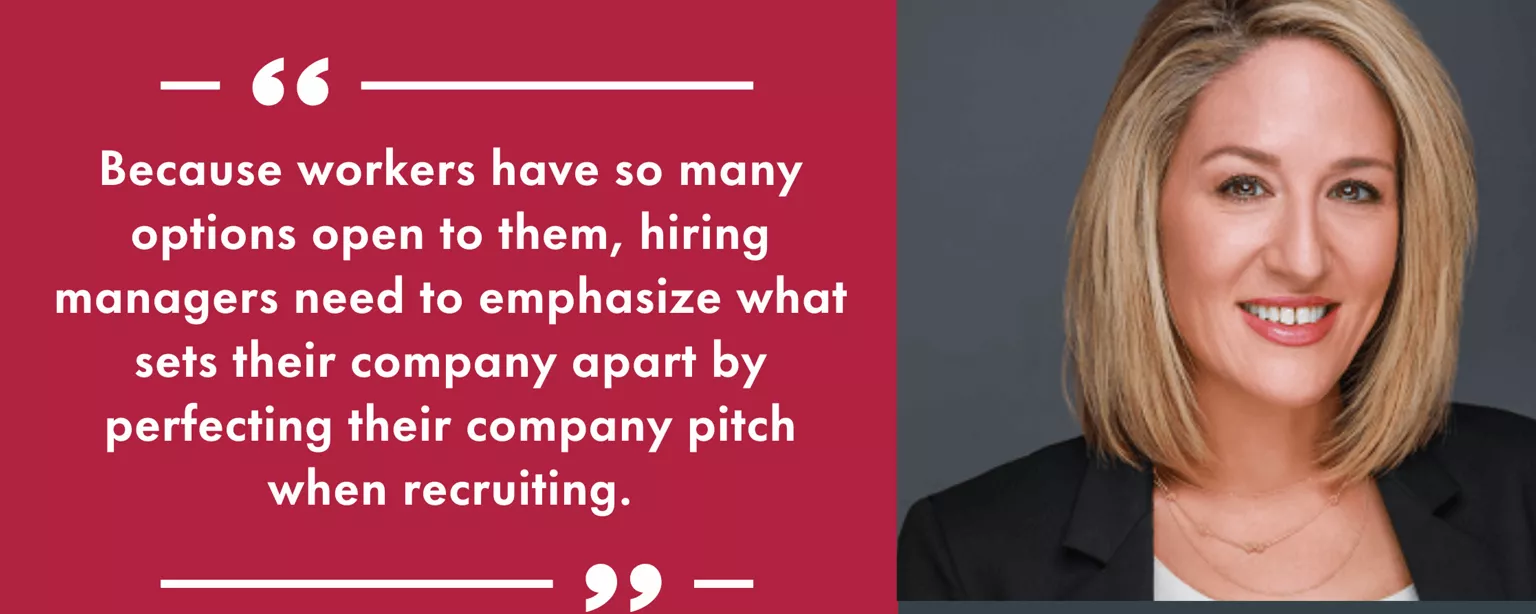Welcome to the latest post in Robert Half’s Thought Leader Q&A series, which features insights from those who have made our company a great place to work and a premier provider of talent solutions.
Stephanie Naznitsky has spent the last 20 years with Robert Half, starting as a talent solutions manager and then taking on roles of increasing responsibility, including regional vice president for several West and East Coast offices.
Now, as executive director of the administrative and customer support practice for Robert Half, her extensive knowledge of the job market and workplace trends makes her a trusted thought leader in this field.
Here are some questions we asked Stephanie recently, along with her answers.
Administrative and customer support roles have changed significantly from the years of rotary phones and steno pads. Since then, these positions have continued to evolve. What are some of the biggest shifts you’ve seen recently?
Since the start of the pandemic, there’s been a tremendous evolution in the administrative field, especially when it comes to the technologies that are being used for remote and hybrid working. Administrative professionals have had to step up to support their departments with video conferencing, meeting scheduling, virtual onboarding of new employees, and training for teams working from home or in the office.
With customer service and support roles, employers are looking for candidates at higher skill levels to help them provide elevated experiences for their customers. To support the surge in online shopping since the pandemic began, companies need professionals with specific experience in e-commerce customer support. They’re looking for masters of multitasking who also have excellent written and verbal communication skills. Personality, empathy and strong communication skills are important qualities that hiring managers look for in these candidates today.
What are the most important trends affecting the hiring environment that employers and job seekers need to know about?
One trend that stands out is the amount of leverage job candidates have in this talent-short market. Because workers have so many options open to them, hiring managers need to emphasize what sets their company apart by perfecting their company pitch when recruiting. What's the story they want to tell about their organization, their department and the open position? What can they do to explain how the open role is critical to supporting the customer experience and, in turn, the company’s bottom line. What professional development opportunities does the company offer? These are especially important to job candidates today.
Employers should also make sure salaries are competitive by consulting resources such as the current Robert Half Salary Guide to learn about the latest in compensation and benefits.
For their part, job seekers should make the most of this same trend: today’s candidate-driven market. I feel like candidates can ask for more, whether it’s about pay or benefits, or the amount of flexibility offered in the work environment. They should also weigh factors such as the organization’s values and related company culture. How do those things relate to their own long-term career goals and where they see themselves in the organization?
Before they accept a job offer, which might come sooner than they expect, they should consider what factors are most important to them and then bring them up in job interviews and career discussions.
A few years ago, you were interviewed for a blog post about working in partnership with your executive assistant. You were an early adopter of working remotely, as you and your executive assistant worked in separate states. What are the keys to establishing a successful business relationship when working remotely?
Back then, we talked about what it was like to work in different parts of the country. I’m in New Jersey, and my executive assistant, Lani Sykora, is in Ohio so I was on conference calls with her all the time. Now we have the luxury of video. So, I guess the only tip I would add for working remotely is to create a connection with video conferencing. With video, my kids know Lani, and I know her kids. I got to see her new black lab puppy. I don’t think we’d be as close if it weren’t for these video conference calls while we’re working from home. That connection helps us a great deal when working together.
Learn about Robert Half's Remote Talent Solutions.
What are some other workplace trends you’re seeing as we head into a new year?
Organizations have made huge shifts with remote work, and it will be interesting to see the hybrid models that evolve in the workplace as we move forward.
We’re also seeing innovations in human resources in the areas of employee engagement, perks and benefits, and diversity and inclusion. Companies are expanding their HR teams and actively hiring assistants, benefits specialists, directors, generalists, managers and recruiters. More HR professionals are taking on hybrid job responsibilities that include administrative and payroll duties and work involving health and safety programs and company policies and procedures. HR has also become a critical advisor to the executive suite.
What’s the best piece of advice you’ve ever received?
I remember saying this on my 20th anniversary, almost a year ago, and it’s true today: Be your authentic self. Be true to who you are in all aspects of your life. I feel fortunate that Robert Half promotes individuality and its people and that it has set the industry standard for ethics, integrity and innovation. I'm able to live by these values.
Follow Stephanie Naznitsky on LinkedIn.
Meet other Thought Leaders at Robert Half, such as Jamy Sullivan and Dawn Fay. And be sure to subscribe to the Robert Half newsletter for future installments of our Q&A series and to discover more unique stories, experiences and perspectives on the latest hiring trends.







